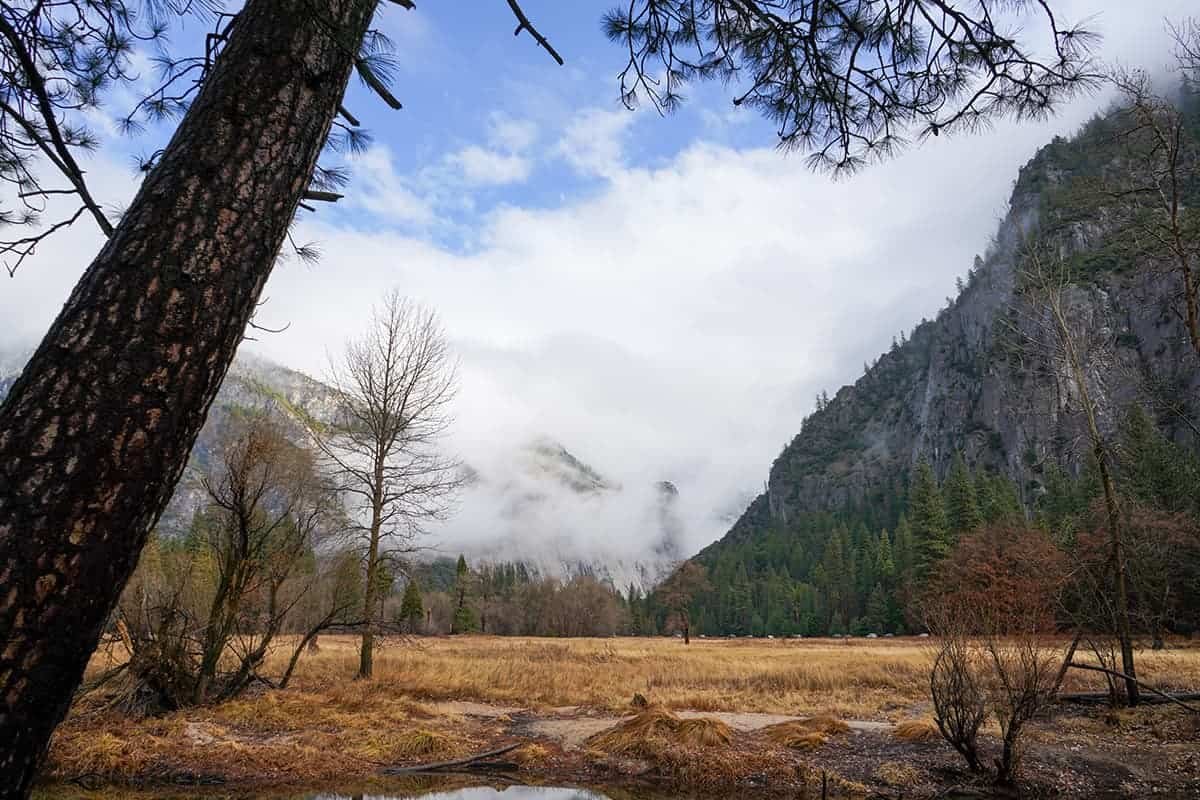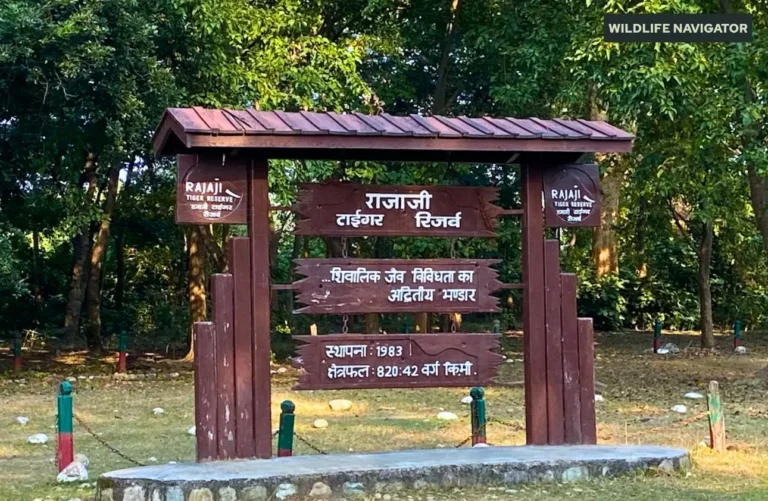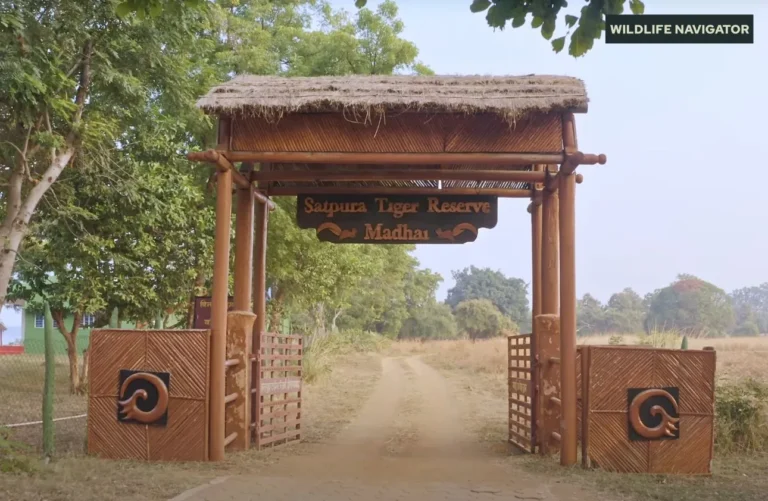List of National Parks in India State Wise 2025

India is a land of incredible natural wealth, where dense forests, snow-capped mountains, arid deserts, and vibrant wetlands come together to form some of the most diverse ecosystems on Earth. To preserve this rich biodiversity, the country has established an extensive network of protected areas, among which National Parks hold a place of pride.
As of 2025, India is home to 106 National Parks, covering more than 44,000 square kilometres of land. This accounts for about 1.35% of the country’s total geographical area, making these parks vital for protecting endangered wildlife species, rare plants, and fragile habitats. From the mighty Royal Bengal tiger of Jim Corbett to the one-horned rhinoceros of Kaziranga, and from the Asiatic lions of Gir to the snow leopards of Hemis, each park is a sanctuary of unique life forms.
National Parks are not only about conservation—they are also windows into nature’s raw beauty. They attract millions of travellers, nature enthusiasts, and researchers every year, offering opportunities for eco-tourism, photography, birdwatching, trekking, and safaris. Many of these parks are also recognised as UNESCO World Heritage Sites and Biosphere Reserves, underscoring their global significance.
In this guide, we’ll explore the total number of national parks in India (2025), their state-wise distribution, the oldest and newest parks, and the importance they hold in India’s ecological and cultural identity.
What is a National Park?
A National Park is a specially designated protected area that preserves nature in its purest form. Unlike ordinary forests, national parks are created to safeguard wildlife, flora, fauna, landscapes, and ecosystems from human exploitation. They represent zones where nature thrives with minimal interference, ensuring that rare and endangered species continue to exist in their natural habitats.
In India, national parks are notified under the Wildlife Protection Act, 1972, which gives them the highest level of protection. Once an area is declared a national park, activities such as hunting, grazing, tree-cutting, and private land use are strictly prohibited. Tourism is allowed but is regulated to maintain ecological balance.
National Parks are different from Wildlife Sanctuaries and Tiger Reserves:
- A Wildlife Sanctuary provides protection but allows some human activities like grazing or research under permission.
- A Tiger Reserve is specifically created under Project Tiger for tiger conservation, and currently, there are 54 Tiger Reserves in India across 18 states.
- A National Park, on the other hand, has stricter boundaries and conservation laws, focusing on overall biodiversity protection.
Globally, national parks are not just biodiversity hotspots but also cultural landmarks. In India, they reflect the country’s rich ecological diversity, ranging from Himalayan high-altitude parks like Great Himalayan National Park to coastal parks such as Gulf of Mannar.
Thus, national parks in India serve a dual purpose — conserving endangered species like tigers, lions, elephants, and rhinos, while also offering nature lovers a chance to explore wilderness responsibly.
Total National Parks in India (2025)
As of September 2025, India proudly hosts 106 National Parks, spread across its vast and diverse landscape. Together, these parks cover an area of 44,402 square kilometres, which is roughly 1.35% of the country’s geographical area. While this may sound small in percentage terms, the ecological value they hold is immeasurable.
National parks are unevenly distributed across states, reflecting India’s varied geography. For example, Madhya Pradesh, often called the “Tiger State of India”, has the highest number with 12 national parks, including famous ones like Kanha, Bandhavgarh, and Pench. On the other hand, smaller Union Territories like Goa and Sikkim have only one national park each. This variation highlights how every corner of India contributes to the nation’s biodiversity map.
The management and declaration of these parks fall under the Ministry of Environment, Forest and Climate Change (MoEFCC), which works with state forest departments to ensure legal protection. Over the years, India has steadily increased its number of parks to strengthen wildlife conservation and balance development with environmental sustainability.
What makes these national parks special is the variety of ecosystems they preserve. From tropical rainforests in the Northeast to alpine habitats in the Himalayas, and from dry grasslands in central India to mangrove ecosystems in the Sundarbans, each park safeguards a unique ecological niche.
Thus, the 106 national parks of India are more than just numbers—they are living testaments to India’s commitment to protecting its wildlife heritage and natural beauty for future generations.
State-Wise List of National Parks in India
One of the most fascinating aspects of India’s wildlife network is how national parks are spread across different states and union territories, each protecting a unique ecosystem. While some states boast a large number of parks, others have just one or two, yet each contributes significantly to India’s conservation story.
Below is the updated state-wise list of national parks in India (2025):
| State / UT | Number of National Parks | Names of National Parks |
|---|---|---|
| Andhra Pradesh | 3 | Papikonda, Rajiv Gandhi (Rameswaram), Sri Venkateswara |
| Arunachal Pradesh | 2 | Mouling, Namdapha |
| Assam | 7 | Dibru-Saikhowa, Kaziranga, Manas, Nameri, Orang, Raimona, Dehing Patkai |
| Bihar | 1 | Valmiki |
| Chhattisgarh | 3 | Guru Ghasidas (Sanjay), Indravati, Kanger Valley |
| Goa | 1 | Mollem |
| Gujarat | 4 | Gir, Blackbuck, Marine (Gulf of Kachchh), Vansda |
| Haryana | 2 | Kalesar, Sultanpur |
| Himachal Pradesh | 5 | Great Himalayan, Inderkilla, Khirganga, Pin Valley, Simbalbara |
| Jharkhand | 1 | Betla |
| Karnataka | 5 | Anshi (Kali), Bandipur, Bannerghatta, Kudremukh, Nagarhole |
| Kerala | 6 | Anamudi Shola, Eravikulam, Mathikettan Shola, Pampadum Shola, Periyar, Silent Valley |
| Madhya Pradesh | 12 | Bandhavgarh, Fossil, Indira Priyadarshini Pench, Kanha, Madhav, Panna, Sanjay, Satpura, Van Vihar, Dinosaur Fossil, Pench, Kuno |
| Maharashtra | 6 | Chandoli, Gugamal, Navegaon-Nagzira, Pench (Maharashtra), Sanjay Gandhi, Tadoba |
| Manipur | 1 | Keibul Lamjao |
| Meghalaya | 2 | Balphakram, Nokrek |
| Mizoram | 2 | Murlen, Phawngpui |
| Nagaland | 1 | Intanki |
| Odisha | 2 | Bhitarkanika, Similipal |
| Rajasthan | 5 | Desert, Keoladeo, Mukundra Hills, Ranthambore, Sariska |
| Sikkim | 1 | Khangchendzonga |
| Tamil Nadu | 5 | Guindy, Gulf of Mannar, Indira Gandhi, Mudumalai, Mukurthi |
| Telangana | 3 | Kasu Brahmananda Reddy, Mahaveer Harina Vanasthali, Mrugavani |
| Tripura | 2 | Clouded Leopard, Rajbari |
| Uttar Pradesh | 1 | Dudhwa |
| Uttarakhand | 6 | Corbett, Gangotri, Govind, Nanda Devi, Rajaji, Valley of Flowers |
| West Bengal | 6 | Buxa, Gorumara, Jaldapara, Neora Valley, Singalila, Sundarbans |
| Andaman & Nicobar | 9 | Campbell Bay, Galathea Bay, Mahatma Gandhi Marine, Middle Button, Mount Harriet, North Button, Rani Jhansi Marine, Saddle Peak, South Button |
| Chandigarh | 0 | — |
| Dadra & Nagar Haveli / Daman & Diu | 0 | — |
| Delhi (NCT) | 1 | National Zoological Park (proposed as NP) |
| Jammu & Kashmir + Ladakh | 4 | City Forest (Salim Ali), Dachigam, Hemis, Kishtwar |
Explanation
- Madhya Pradesh tops the list with 12 national parks, making it the “Tiger State of India”.
- Andaman & Nicobar Islands rank second with 9 parks, most of them marine ecosystems.
- Assam has 7 parks, including the world-famous Kaziranga (home to the one-horned rhinoceros) and Manas, a UNESCO World Heritage Site.
- Smaller states like Sikkim, Goa, Nagaland, Manipur, and Bihar have just one national park each, yet they play a crucial role in protecting unique species such as the red panda in Sikkim or the sangai deer in Manipur.
This diversity shows how India’s national parks are not evenly distributed but are strategically spread to conserve different habitats — from high-altitude Himalayan meadows to tropical rainforests, deserts, wetlands, and islands.
Oldest and Newest National Parks in India
India’s journey of wildlife conservation through national parks has a long and fascinating history. The very first national park in India was established almost nine decades ago, setting the foundation for the rich network of protected areas we see today. Since then, new parks have been added steadily, each representing a milestone in the country’s conservation movement.
Oldest National Park: Jim Corbett National Park
- Established in 1936 as Hailey National Park (later renamed in honour of hunter-turned-conservationist Jim Corbett).
- Located in Uttarakhand, it spans over 520 square kilometres of hills, riverine belts, and grasslands.
- Famous as the first tiger reserve under Project Tiger (1973).
- Known for its population of the Royal Bengal Tiger, elephants, gharials, and over 600 bird species.
- Today, it is not only a conservation hub but also one of India’s most popular eco-tourism destinations.
Newest National Park: Dehing Patkai National Park
- Declared in 2021, it is located in Assam.
- Nicknamed the “Amazon of the East” due to its dense rainforest ecosystem.
- Spreads across 231 square kilometres and is home to clouded leopards, golden cats, hornbills, elephants, and a wide variety of orchids.
- Dehing Patkai highlights India’s commitment to expanding protected areas even in recent times, especially in the fragile ecosystems of the Northeast.
Together, Jim Corbett and Dehing Patkai symbolise the evolution of India’s conservation efforts — from the earliest attempts to protect tigers in the Himalayan foothills to the modern recognition of Northeast India’s rainforest biodiversity. This historical span reflects how national parks continue to evolve with India’s ecological priorities.
Famous National Parks in India
While every national park in India has its own ecological significance, some have earned global fame for their unique wildlife, rare species, and breathtaking landscapes. These iconic parks attract millions of visitors every year and often serve as symbols of India’s biodiversity.
Jim Corbett National Park (Uttarakhand)
The oldest national park in India, Corbett, is world-renowned for its Royal Bengal Tigers. Its picturesque landscape of dense Sal forests, grasslands, and river valleys makes it a favourite among wildlife photographers and safari enthusiasts.
Kaziranga National Park (Assam)
A UNESCO World Heritage Site, Kaziranga is the stronghold of the Indian one-horned rhinoceros. It also shelters wild buffalo, swamp deer, elephants, and a thriving population of tigers, making it one of India’s richest biodiversity zones.
Gir National Park (Gujarat)
The only home of the Asiatic Lion, Gir, has global significance. Apart from lions, it houses leopards, striped hyenas, and antelopes. The conservation success story of Gir is often celebrated worldwide.
Ranthambore National Park (Rajasthan)
Once the hunting grounds of the Maharajas, Ranthambore is today famous for its tiger sightings against the backdrop of Ranthambore Fort and ancient ruins. It combines history with wilderness, making it a unique attraction.
Sundarbans National Park (West Bengal)
Part of the largest mangrove forest in the world, Sundarbans is famous for the Royal Bengal Tigers that swim across tidal creeks. It is also a UNESCO World Heritage Site and a critical buffer against climate change.
These national parks stand out not only for their charismatic species but also as symbols of India’s commitment to wildlife conservation. Each visit promises a different encounter with nature’s wonders.
Importance of National Parks
National Parks are far more than tourist destinations — they are the green lungs of India and play a vital role in maintaining the country’s ecological balance, biodiversity, and cultural heritage. Their importance can be understood on several levels:
1. Wildlife Conservation
National parks are sanctuaries for countless species of animals, birds, and plants. They protect endangered species such as the Bengal tiger, Asiatic lion, one-horned rhinoceros, and snow leopard, ensuring these creatures survive for future generations.
2. Ecosystem Protection
By preserving forests, wetlands, grasslands, and deserts, national parks safeguard entire ecosystems. They help regulate climate, water cycles, and soil fertility, which indirectly support human life and agriculture.
3. Scientific Research and Education
These parks provide researchers with natural laboratories to study ecology, animal behaviour, and conservation methods. They also serve as educational hubs for schools and universities, teaching the importance of sustainability.
4. Tourism and Economy
Eco-tourism in national parks contributes significantly to local economies. Safari tours, guided treks, and cultural exchanges generate income for nearby communities while creating jobs in hospitality, transport, and conservation.
5. Cultural and Spiritual Value
Many national parks are intertwined with India’s traditions and folklore. From the sacred landscapes of Nanda Devi to the mystical mangroves of Sundarbans, they hold deep cultural significance.
In short, national parks are not just about wildlife; they are lifelines for humans and nature alike, providing a balance between conservation, education, and sustainable development.
FAQs on National Parks in India
National Parks are a topic of curiosity for travellers, students, and wildlife enthusiasts alike. Here are some frequently asked questions to help you understand India’s protected areas better:





